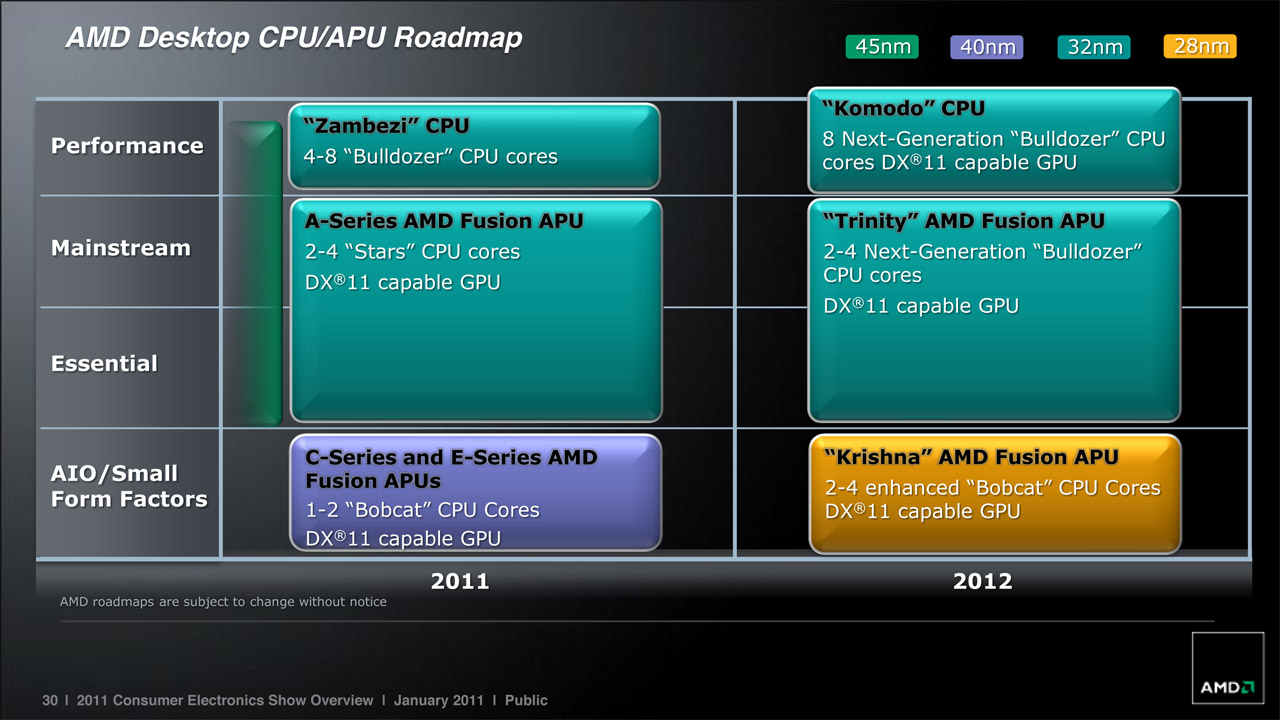AMD Fusion E-350 APU Platform Review - Conclusions
All in all, I think that AMD succeeded with the Brazos APU. The E-350 is capable as a gaming platform, as long as you have the proper expectations. It can push "big" titles such as Far Cry 2 and Dirt 2 at almost 30fps on Low settings. It can also push titles like HAWX and HL2: Lost Cost well past 30fps on the lowest settings, at what I would consider the "native" resolution of the platform. In an implementation of something like the HP Pavilion dm1z, this comes in a package that averages 1" thick, weighs 3.5 pounds, and starts out at $400.
However, I think the E-350 really shines when you mix smaller indie titles with something like the Steam Cloud, where you can use an ultra-portable to go mobile and pick up right where you left off at home. The E-350 performed exceptionally well on titles such as Orcs Must Die! and Torchlight. While I would always prefer to game on my Eyefinity rig, having cloud-based storage of game saves allows the user to use the E-350 Fusion APU to continue their game mobile or remote. I could see myself playing something like Orcs Must Die! or Torchlight at home, and then taking an ultra-portable out with me while shopping with my wife. With an external mouse, I could easily pass the time while my wife tried on clothes.
This holds true as well for an MMO like Guild Wars. I may not take on a big raid (though the E-350 did provide exceptional performance), but I could easily work quests, explore, farm for materials or craft. Many ultra-notebooks include 3G options which make this possible. If you opt out of an included 3G option on the notebook, 3G and 4G hotspots still make this a viable option. Mobile 3G won't work for every gaming option, but there often the option of using a public Wi-Fi.
Beyond a temporary excursion to the mall or coffee shop, an ultra-portable would also prove to be a viable gaming option when traveling for business or pleasure. The small form-factors possible with the 18w E-350 would add minimal weight and bulk when packing for a business trip, or a trip to grandma's house. Both of these scenarios could offer big-screen gaming by connecting the ultra-portable to an HDTV in the hotel room or a relative's house.
The Fusion APU architecture was quite successful in reducing internal roadblocks, and bringing a real gaming experience to an ultra-portable or all-in-one platform.


The Brazos platform is just the first in AMD's plans for its APU family. Roadmaps for 2011 and 2012 have been released that outline plans for both notebooks and desktops. The 2011 roadmap for notebooks shows that all of their offerings will move away from CPU and discrete graphics to solely APU offerings. For 2012, the notebooks roadmap will bring 4 core options for notebook APUs, as well as beginning to leverage the just released "Bulldozer" CPU cores for mobile APUs. The final piece of the 2012 notebook roadmap will be to bring the C-Series lower-power APUs into the tablet space.
The 2011 and 2012 roadmaps for desktops continue both APU and CPU/discrete-GPU offerings. The A-Series APU recently released for "mainstream" desktops, while the "Bulldozer" CPU was just released in 4-core and 8-core options. In 2012 we will see the Bulldozer cores come into the desktop APU segment as well.




I've just finished building a system based on the Llano platform. The A-3850 "Lynx" APU is a big step up from the E-350 "Zacate", and is geared towards mainstream desktop usage. Considering the solid performance of the E-350, and the increased specs of the A-3850, I'm expecting the Lynx platform to be a solid performer for a mainstream gamer. Look for a benchmark and review of that platform in the near future.
Additionally, I've passed the ASUS motherboard, RAM and PSU to Delphium for a second review. He will do a proper review of the ASUS motherboard itself, along with a review of the platform as the basis of an HTPC and NAS.
| Platform | Series | Model | CPU | GPU | ||||
| Core | Freq. | Cache | Model | Config | Freq | |||
| Brazos | Zacate | E-350 | 1 | 1.5 GHz | 512KB | HD 6310 | 80:8:4 | 500MHz |
| Llano | Lynx | A8-3850 | 4 | 2.9 GHz | 4x 1MB | HD 6550 | 400:20:8 | 600MHz |
